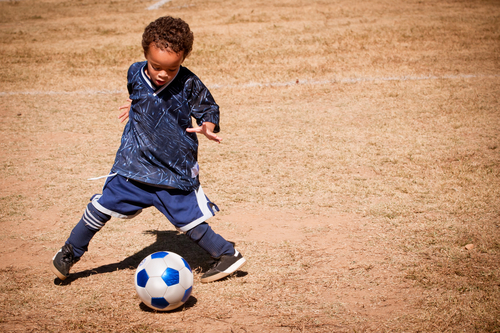Fidgeting is a common result of excess energy in children and can interfere with positive behaviors. Excess energy and fidgeting can be distracting and disrupt learning. According to an article on Autism Speaks, by Geraldine Dawson and Michael Rosanoff, “Increased aerobic exercise can significantly decrease the frequency of negative, self-stimulating behaviors that are common among individuals with autism, while not decreasing other positive behaviors.” Exercise is a positive outlet for children exhibiting these behaviors.
Physical activity will release some of this energy and in turn, promote positive behavior. Lack of time is a common barrier to fitness with therapy sessions, school, and doctor visits. To help facilitate this we have come up with some ideas for fun exercising regardless of a busy schedule. We have provided different options based on various children’s interests, in order to keep them fully engaged, as well as different variations depending on the level of comprehension in each child.
For those children interested in sports, you can set up “routes” or “bases” with cones for the children to run around.
At the end of each course, you can leave a football, baseball, or soccer ball for them to throw or kick to you. If your child comprehends and reads numbers well, you can label each cone and call out which number for them to run to.
Otherwise, you can use flashcards to label each cone, and you can hold up the matching card that you want them to run to. This will add some cognitive thinking to the exercise. Have them run these routes for about 30 minutes or until you feel they have released all their excess energy.
Especially in the summertime, some children might enjoy water sports or games. Water gun tag is an easy way to get the children involved in playtime outside to shed some energy. You can utilize a similar labeling system as the sport ideas mentioned above, but feel free to switch it up a bit and use some pool noodles or other water toys for them to run to.
You can incorporate colors to help the children engage in their visual senses. Motivate the kids to run to the next cone or noodle so they can get a nice and refreshing spray of water or spray you and any siblings with water. Again, play for around 30 minutes or until fatigued.
For children who enjoy a challenge, you can set up a fun obstacle course for them to run through.
You can use tape or chalk to label or point to each station. One portion of the obstacle course can be jumping from hoola hoop to hoola hoop (or just chalk circles). Another can be crawling under strings or chairs. You can incorporate some jumping jacks, and some skipping or running around cones, as well.
Add some fun by challenging your child to balance a bean bag on their head while running. Again, you can utilize a similar labeling system as before, and have them run through the course until fatigued.
Some children who enjoy music and dancing might enjoy a freeze game.
This game can get them engaged in their sense of hearing, as you play and pause music for this child. Once the music begins, the child can jump around, dance, or run; once the music is paused, the child has to freeze in that very motion. Play the music again and repeat for a fun way to release some energy.
These are just a few fun games that involve exercise to get your child moving and active, while still creating a fun atmosphere. They are easy to set up for your busy schedules and can be modified. After enough physical activity your children have released some excess energy to help decrease their fidgeting.
It is also proven that exercise can have a positive effect in many aspects:
- reduced risk of obesity,
- reduced risk of cardiovascular diseases,
- a healthier lifestyle,
- and even increased self-esteem.
In fact, the American Heart Association recommends 60 minutes of moderate to vigorous intensity exercise daily for all children, with or without disabilities.
What games do you play that involve movement?
Authors:
Alfred Chavira, Director of Health and Wellness
Angelica Niño, University of Texas San Antonio Senior
Kat Chadwick , University of Texas San Antonio Senior
Alfred Chavira, Any Baby Can’s Health and Wellness Director holds a Bachelors in Biology and a Masters in Kinesiology. He has 10 years of experience in the field of health and wellness and 6 years of experience in adaptive fitness. Alfred also teaches a CEU Class titled “Teaching Strategies for Adapted Fitness”. He has presented strategies for adapted fitness at multiple conferences including: 2105 SHAPE America Southern District Conference, 2014 California Association for Health, Physical Education and Recreation, 2104 5-P Society Annual Conference, 2014 Autism Society of Greater Austin and more. AS101 is pleased to offer our viewers/readers the insights of Alfred Chavira!



I am very uncomfortable with the notion that stimming is negative and needs to be suppressed. This is the standard approach for Autism Speaks, which is that autism is a disorder. As a neurotype advocate and as an autistic, I find their position unacceptable. However, I do strongly agree that increased exercise is a wonderful way to deal with energy “excess”.